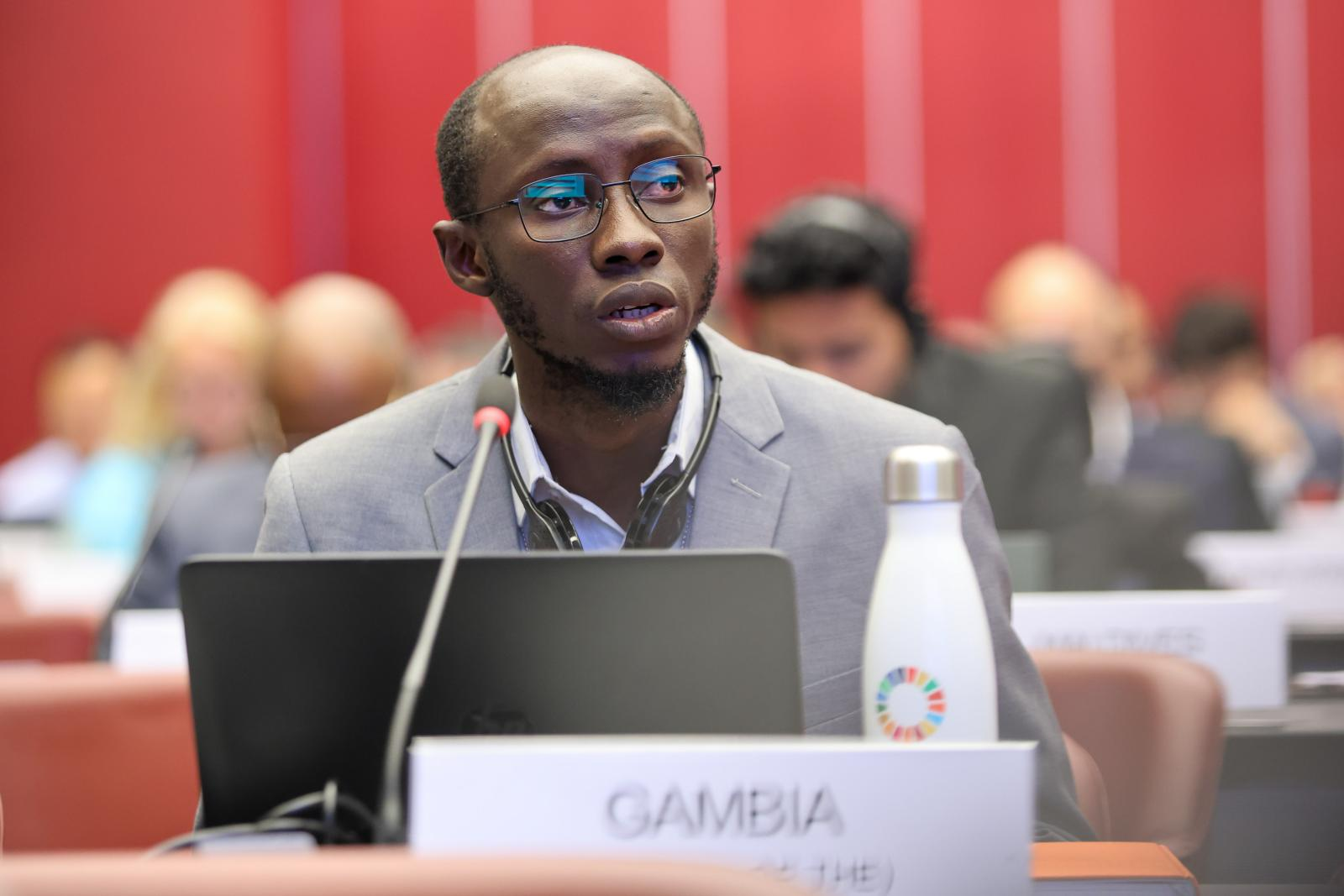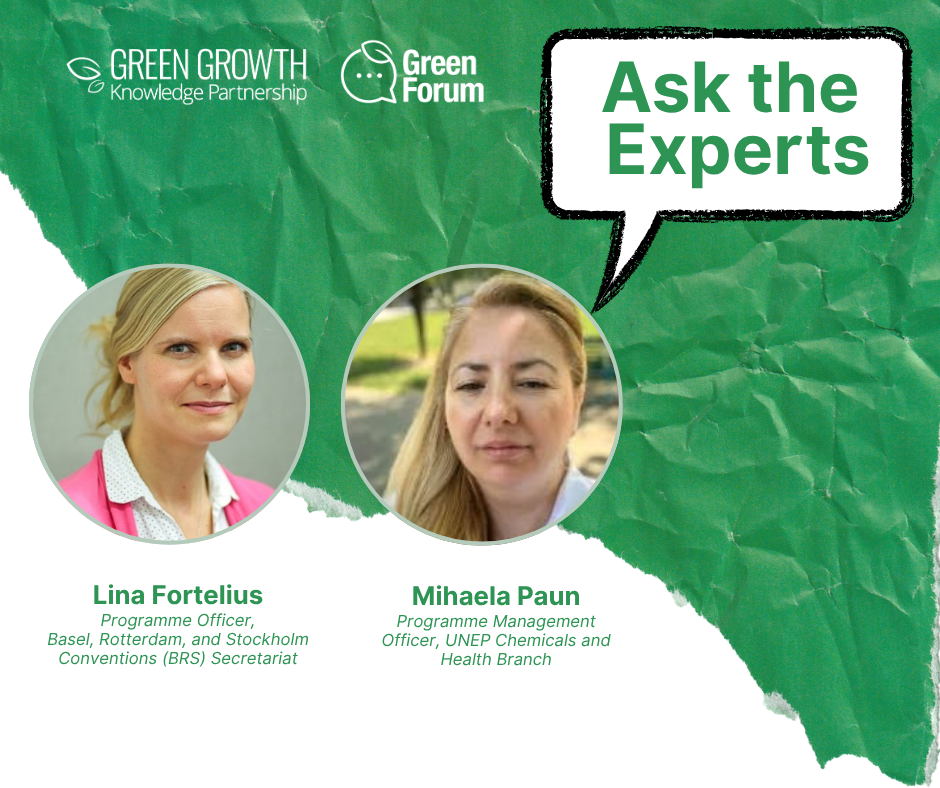This blog post is based on the remarks of Dr. Ovokeroye Abafe on the Global Green Growth Knowledge Partnership (GGKP) roundtable “National Implementation Plans: Research needs and opportunities in Africa” held on 10 June 2025.
PFAS in the African Context: Unseen Threats and Emerging Responses
Per- and polyfluoroalkyl substances (PFAS) may be invisible to the naked eye, but their global reach is anything but hidden. Known for their resistance to heat, water, and oil, these synthetic chemicals have become deeply embedded in modern life. From the surface of a non-stick pan to the foam that extinguishes fires, PFAS are everywhere—woven into stain-resistant textiles, infused in food packaging, used in pesticides, electronics, cosmetics, and even medical devices. Industrial giants like the aerospace, automotive, electronics, and textile sectors depend on them for durability and performance.
In Africa, PFAS have crept in less through domestic production and more through the channels of global trade. South Africa manufactures compressed air foam systems (CAFS), while PFAS-containing aqueous film-forming foams (AFFFs)—brands like HYDRAL 3C, 6C, and AR 3-3AR—are available across the continent. These products, along with imported raincoats and treated materials, steadily introduce PFAS into African markets. Yet, there's a striking gap: no official or accessible record of local PFAS production exists.
Policy and the Patchwork of Regulation
Efforts to regulate PFAS across Africa remain scattered. While a few countries are stepping up, the regulatory landscape is fragmented and enforcement inconsistent. South Africa made a significant move by mandating the phase-out of perfluorooctane sulfonate (PFOS) and its salts by the end of 2021. Kenya’s National Implementation Plan under the Stockholm Convention recommends PFAS monitoring. Still, many other national policies remain silent on these persistent pollutants.
Tracing Human Exposure: What the Data Tells Us
Despite PFAS' growing footprint, data on human exposure in Africa remain sparse. About 75 peer-reviewed studies have examined PFAS across the continent, most narrowly focused on contamination in water and wastewater. But what about the air people breathe, the food they eat, the products they touch? Research into inhalational, dermal, and dietary exposure is urgently needed.
South Africa offers a window into some of these gaps. A study funded by FAO and IAEA explored PFAS in marine life—abalone, mussels, lobsters, oysters. These species, harvested for export, were found to contain short-chain PFAS like PFPA, PFBA, and PFHxA. Since most seafood is shipped overseas, domestic exposure risk was considered low.
However, the picture shifts when we look at dairy milk and infant formula, consumed widely across the region. Both were found to contain long- and short-chain PFAS. Alarmingly, infants relying solely on formula were exposed to levels slightly above safe guidelines, signaling risks to one of the most vulnerable groups.
The story deepens in South African tap water. A comprehensive study found that average levels of PFOA, PFOS, PFNA, and PFHxS surpassed US EPA limits, posing serious health implications.
Through the Lens of Biomonitoring
What happens when PFAS make their way into the human body? A small but important biomonitoring study looked at matched samples of breast milk and maternal serum from 70 pregnant South African women. The findings were sobering: both short- and long-chain PFAS were present in the milk, with PFOS notably high in serum. Infants exclusively breastfed were at significant risk from PFAS such as PFOA. Although PFOS levels were generally below the global median of 6.17 ng/ml, the socioeconomic context—low-income women with reduced exposure from consumer goods—underscores the need for broader population studies. As PFAS exposure is often higher among affluent populations, the real picture may still lie hidden.
Building Capacity from Within
The continent is not standing still. South Africa’s National Reference Laboratory in Pretoria leads PFAS testing and analysis. Between 2017 and 2021, 8 countries participated in an IAEA-supported regional training programme on food safety and nuclear analysis. This initiative led to five national laboratories achieving ISO 17025 accreditation.
A regional ecosystem is emerging. As Dr. Abafe emphasized:
“This is the approach that we can take, especially when it comes to PFAS analysis—having a coordinated programme where national facilities are trained to be independent, and then there should be information flow within this ecosystem.”
This approach culminated in the African Food Safety Network, fostering cross-border laboratory collaboration and reducing reliance on international testing.
Looking Forward
To effectively address PFAS in Africa, several steps must be taken. Existing policies for legacy compounds like PFOS and PFOA should be revisited to evaluate their effectiveness. Mapping out PFAS in products, stockpiles, and waste streams through material flow analysis will be crucial. Authorities must develop integrated, cross-sectoral monitoring systems and invest in exposure assessments tailored to diverse population groups. In tandem, epidemiological studies must explore PFAS' role in rising public health challenges, including cardiometabolic disease.
A Continental Response in Motion
From invisible contaminants in baby formula to their presence in the deep blue waters of Africa’s coasts, PFAS tell a complex story—one of environmental persistence, regulatory urgency, and scientific awakening. Africa is at the beginning of a long but critical journey. Strengthening infrastructure, investing in people, and sharing knowledge across borders will be essential to protect public health and fulfil global commitments under the Stockholm Convention.
This blog post was developed drawing on insights from the GGKP roundtable “National Implementation Plans: Research needs and opportunities in Africa” held on 10 June 2025. As part of the Global NIP Update project (GEF ID 10785), funded by GEF and led by UNEP, this roundtable brought together researchers and experts engaged in reviewing and updating NIPs under the Stockholm Convention to foster peer learning on the development of POPs inventories.
To learn more about the Global NIP Update project, visit Global NIP Update | Green Policy Platform
For a deeper dive into the GGKP regional roundtable focused on Africa, you can access the full recordings and materials here: https://www.greenpolicyplatform.org/webinar/national-implementation-plans-research-needs-and-opportunities-africa
Authors:
 |
Dr. Ovokeroye Abafe, Brunel University of London, United Kingdom
|
 |
Ms. Soomin Bae, Knowledge Management Support Consultant (GGKP, GGGI)
|



